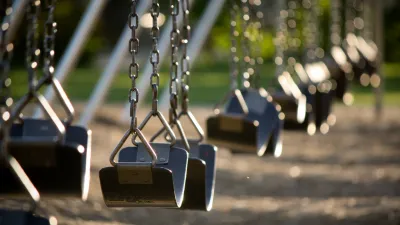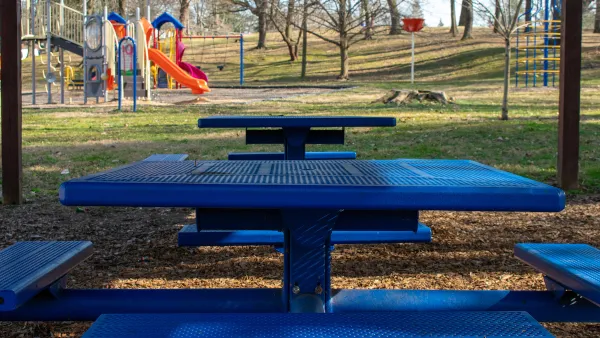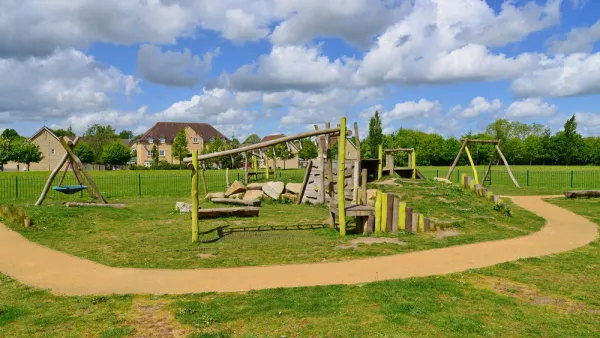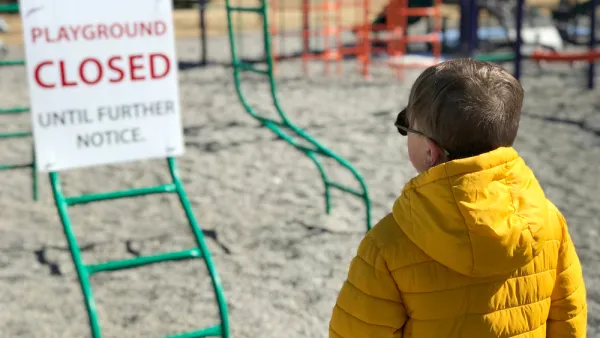From the mid-19th century to the early 1980s, playgrounds were designed public spaces that would likely horrify parents today. Swiss urban planner Gabriela Burkhalter has studied how these public spaces have evolved over the years.

The playgrounds designed today are all nearly tediously uniform, safe, chaperoned spaces where kids are encouraged to explore and play (within the confines of pre-selected safe equipment). Play spaces were not always designed with such a focus on safety, however. Nearing the end of the 19th century, during a time of urbanization and immigration, playgrounds were being designed by many social reformers as a wrangling facility for street children. The theory, according to Gabriela Burkhalter, was that playgrounds were seen to be a beneficial environment for children and additionally created a space for them to gather so as to not disrupt or bother adults. Mimi Kirk interviewed Gabriela Burkhalter for an article on CityLab to discuss the importance of playground design in detail.
Europe created "adventure playgrounds," spaces where children could use tools such as hammers and saws to "build objects and structures in a space free of adults." In the post-WWII era in the U.K., says Burkhalter, adventure playgrounds were seen as the "new civic model of society. The idea was that children would learn how to collaborate because you can’t build on your own. You always need a group to negotiate who uses what tools and materials and for what purpose. Adventure playgrounds were supposed to be little models of democracy."
In the United States, landscape playgrounds, a fixed environment, more artistic or sculptural than present-day playgrounds, became the prevailing playground design. At the time, landscape architects were far more common in the United States than in Europe, because landscape architects designed parks, it naturally made sense that they would design playgrounds as well. "Designers or artists used areas of sand and water, tunnels, mazes, and irregularly-shaped structures to create spaces of whimsy."
Beginning in the 1980s, a series of safety regulations were put out by the playground equipment industry. "No individual architect or artist would then create a playground because the design was too regulated," explains Burkhalter. "The 1980s also saw the end of the idealistic ideas of earlier decades of how society could be changed by something like creating an adventure playground in a neighborhood. People became less interested in public space and retreated into the private space of the home."
A final quote from Burkhalter explains the importance of playgounds to the development of the next generation:
It’s important that we’re having this discussion. People are becoming aware that these parenting trends, and the accompanying constraints put on children’s play and freedom, are not good for children in the end. There is the concern that children no longer take risks and are unable to make decisions when they leave home. As a parent, you have to let them learn and become independent.
FULL STORY: Can We Bring Back Riskier Playgrounds?

Analysis: Cybertruck Fatality Rate Far Exceeds That of Ford Pinto
The Tesla Cybertruck was recalled seven times last year.

National Parks Layoffs Will Cause Communities to Lose Billions
Thousands of essential park workers were laid off this week, just before the busy spring break season.

Retro-silient?: America’s First “Eco-burb,” The Woodlands Turns 50
A master-planned community north of Houston offers lessons on green infrastructure and resilient design, but falls short of its founder’s lofty affordability and walkability goals.

Test News Post 1
This is a summary

Analysis: Cybertruck Fatality Rate Far Exceeds That of Ford Pinto
The Tesla Cybertruck was recalled seven times last year.

Test News Headline 46
Test for the image on the front page.
Urban Design for Planners 1: Software Tools
This six-course series explores essential urban design concepts using open source software and equips planners with the tools they need to participate fully in the urban design process.
Planning for Universal Design
Learn the tools for implementing Universal Design in planning regulations.
EMC Planning Group, Inc.
Planetizen
Planetizen
Mpact (formerly Rail~Volution)
Great Falls Development Authority, Inc.
HUDs Office of Policy Development and Research
NYU Wagner Graduate School of Public Service




























